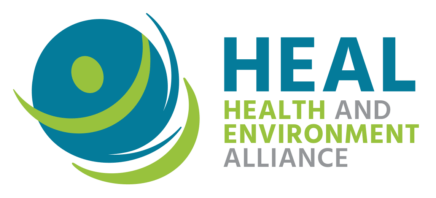As EU member states, regional and local authorities prepare to implement the revised Ambient Air Quality Directive (AAQD), this briefing by the Health and Environment Alliance (HEAL) argues that decision-makers and authorities should pay particular attention to addressing socio-economic inequalities in their clean air efforts. The swift transposition and implementation of the new rules, with strengthened administrative collaboration and the full utilisation of financial support schemes, promise significant progress towards cleaner air across Europe. Improved air quality will be beneficial to everyone and contribute to preventing health inequalities for those living in socioeconomically disadvantaged areas.
The European Chemicals Agency has recognised Perfluorobutane Sulfonic Acid, PFBS (and its salts) as a substance of very high concern (SVHC) [1]. PFBS is part of the large group of PFAS (per- and polyfluoroalkyl compounds), also referred to “forever chemicals” due to their high persistence in the environment. PFAS have raised significant scientific health and environmental concerns over the last decade, but they are still widely used in industrial processing due to their water- and stain-repellent properties [2].
The identification of PFBS as a substance of very high concern was proposed by Norway and discussed at the ECHA Member States Committee, which met on 9-11 December in Helsinki [3]. The committee unanimously agreed that PFBS together with its salts meet the SVHC identification criteria under REACH article 57(f) [4].
Human health and environmental concerns relate to the following aspects:
- PFBS is highly persistent in the environment, highly mobile (especially in the aqueous environment) and has potential for long-range transport – it has been found in surface and marine waters in remote areas such as the Arctic and Antarctic.
- The link between PFBS exposure and probable serious health effects has been confirmed by animal studies, including thyroid hormone disturbances and reproductive toxicity as well as effects on the liver, kidney, haematological system.
- PFBS moderately accumulates in humans and has already been detected in human blood, lungs, bones, kidneys, urine, hair and breastmilk. Because it accumulates in plants and drinking water, ingestion of PFBS via food is a relevant channel of exposure to consider for humans.
- PFBS is very challenging and costly to remove from drinking water – which combined to the above increases concerns about the impossibility to avoid human exposure to the substance.
“We congratulate Member States for identifying PFBS as a substance of very high concern. When considering all of PFBS properties together, protecting current and future generations and our environment from exposure is not only urgent, but also only be possible if we make every effort to minimise emissions as of today,” explains Natacha Cingotti, senior policy officer for health and chemicals at the Health and Environment Alliance (HEAL).
“Scientists have long warned that the entire group of PFAS are a challenge for human health and the environment. This new identification is another reminder that the action plan to eliminate all the non-essential uses of PFAS requested by the environment ministers in June should be a priority deliverable of the EU Commission under the European Green Deal and that the comprehensive restriction announced by the Netherlands yesterday is an important step forward,” she concludes.
In June 2019, European environment ministers called on the European Commission to develop an action plan in order to phase out all the non-essential uses of PFAS in their Council conclusions on chemicals Council Conclusions on Chemicals, 26th June 2019 [5].
At the environment council that took place on 19 December 2019, the Netherlands announced its intention to develop a comprehensive restriction for all uses and products of PFAS, except where essential. ECHA, Denmark, Sweden and Norway have indicated their willingness to cooperate [6].



